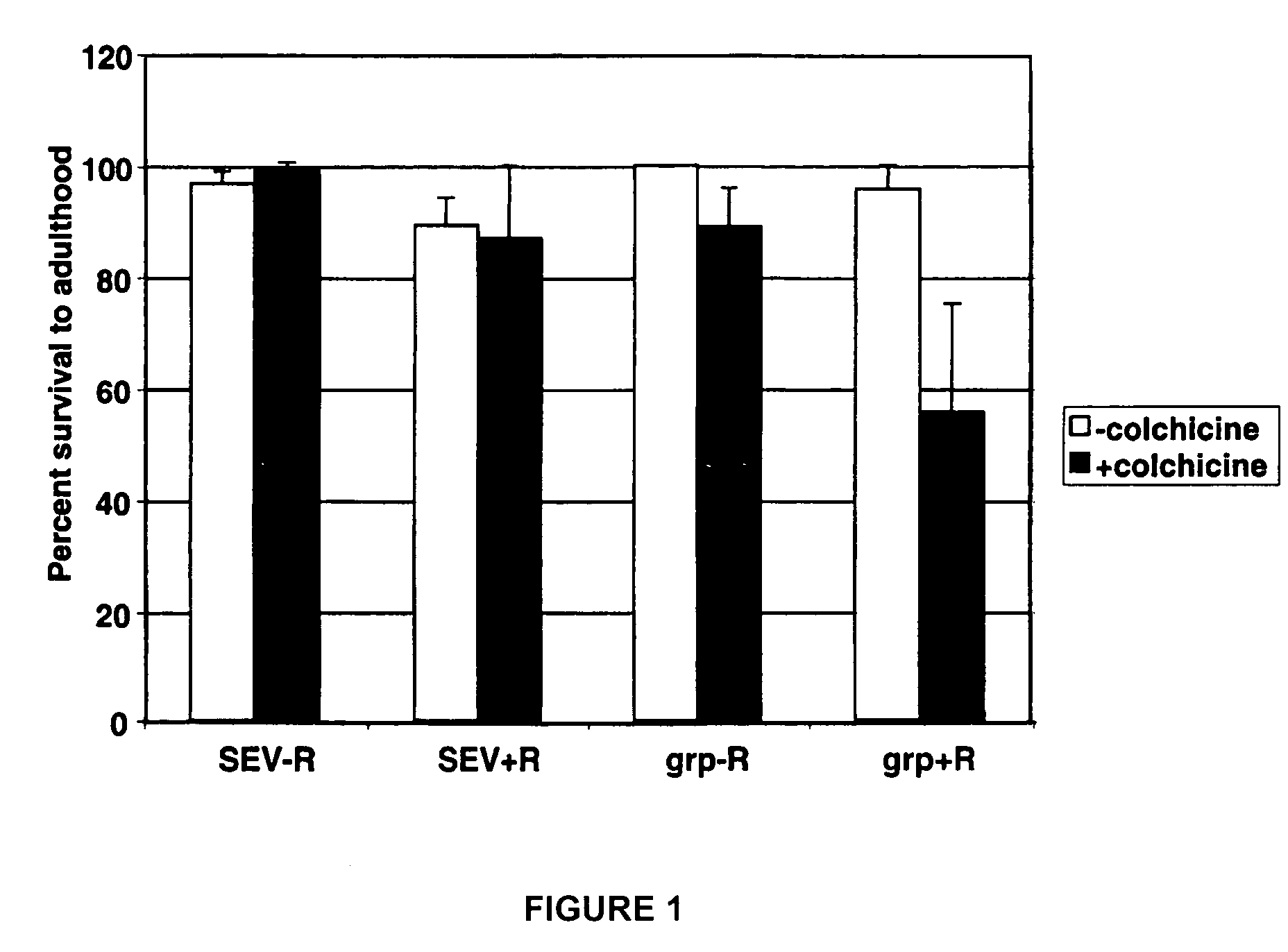Methods of identifying and using chemotherapeutic agents
a technology of chemotherapeutic agents and chemotherapeutic agents, which is applied in the field of identifying and using chemotherapeutic agents, can solve the problems of misclassification of therapeutic agents, agents with the ability to arrest the growth of checkpoint-deficient cells in tissues, and agents with the ability to arrest the growth of checkpoint-deficient cells in culture, so as to reduce survival or growth, and reduce the effect of survival or growth
- Summary
- Abstract
- Description
- Claims
- Application Information
AI Technical Summary
Benefits of technology
Problems solved by technology
Method used
Image
Examples
example 1
Identification of Chemotherapeutic Agents Using Drosophila melanogaster grp Mutants
[0075]To obtain correctly aged larvae, embryos are collected at Day 0 from wild-type and grp mutant heterozygous adults for approximately 4 hours in the late afternoon or early evening 4 days prior to experiment. The embryos are allowed to hatch into larvae and the larvae are allowed to develop. The grp mutant heterozygote adults carry a grp mutation on one chromosome and a wild-type grp gene on a balancer chromosome. The balancer chromosome also carries a Green Fluorescent Protein (GFP) transgene. Thus, grp mutant homozygous progeny of the heterozygous parents do not express GFP and do not fluoresce when illuminated with 400 nm light, whereas wild-type and heterozygous progeny do carry the GFP transgene and so do fluoresce under 400 nm light.
[0076]In the morning of Day 4, food is washed from larvae by using stacked sieves (VWR; USA Standard Testing Sieve: 850, 600, 425, 180 micrometer). The food / larv...
example 2
Identification of Colchicine as a Chemotherapeutic that Selectively Reduces the Survival of Irradiated grp Mutant Larvae
[0079]Using the method exemplified in example 1, the candidate agent colchicine was screened for the ability to selectively reduce the survival of irradiated grp mutant larvae. The concentration of colchicine used was 1.3 μM. The cumulative results of three screens are depicted in FIG. 1. In FIG. 1, SEV−R indicates non-irradiated wild-type larvae, SEV+R indicates irradiated wild-type larvae, grp−R indicates non-irradiated grp mutant larvae, and grp+R indicates irradiated grp mutant larvae (where SEV indicates the Sevelen wild-type strain). The results show that colchicine selectively reduces the survival of irradiated grp mutant larvae.
PUM
| Property | Measurement | Unit |
|---|---|---|
| chromosome stability | aaaaa | aaaaa |
| cell mass | aaaaa | aaaaa |
| genotoxic stress | aaaaa | aaaaa |
Abstract
Description
Claims
Application Information
 Login to View More
Login to View More - R&D
- Intellectual Property
- Life Sciences
- Materials
- Tech Scout
- Unparalleled Data Quality
- Higher Quality Content
- 60% Fewer Hallucinations
Browse by: Latest US Patents, China's latest patents, Technical Efficacy Thesaurus, Application Domain, Technology Topic, Popular Technical Reports.
© 2025 PatSnap. All rights reserved.Legal|Privacy policy|Modern Slavery Act Transparency Statement|Sitemap|About US| Contact US: help@patsnap.com

